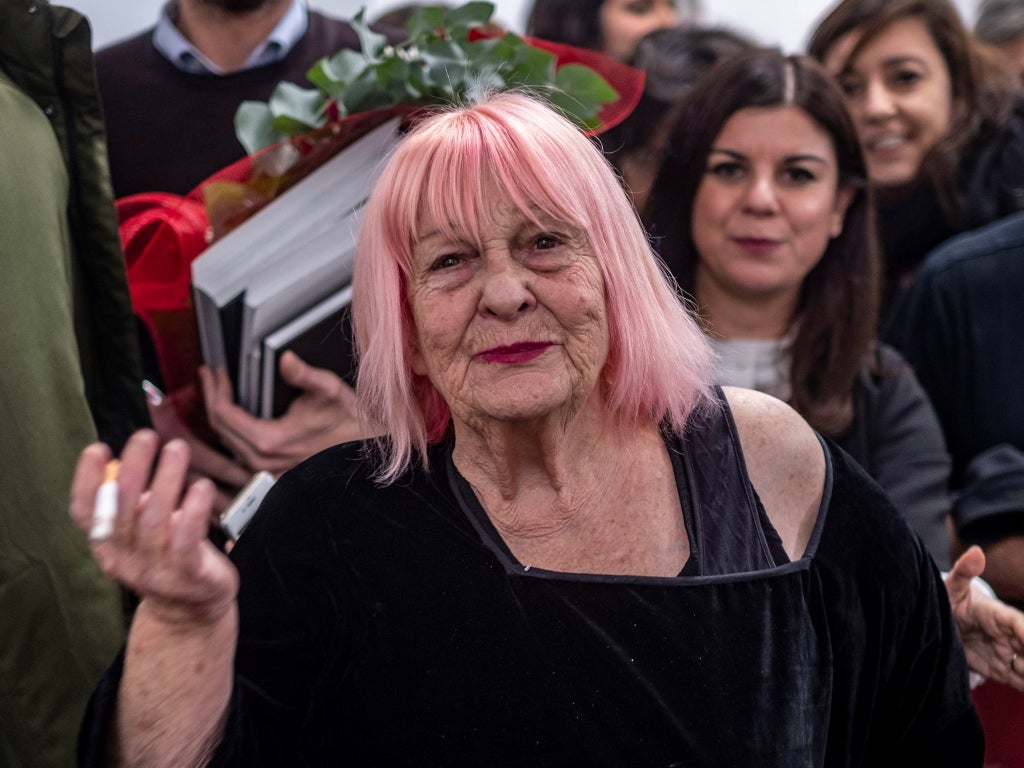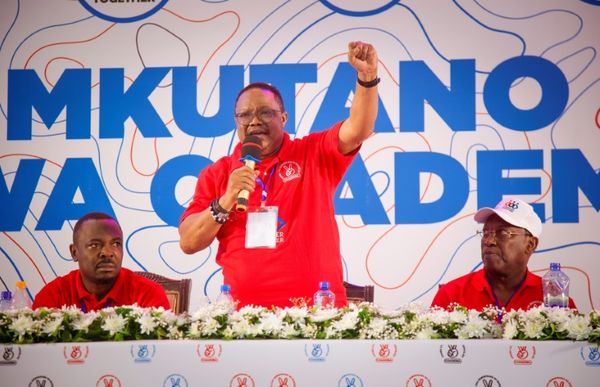
Letizia Battaglia, a Sicilian photojournalist who risked her life to document the brutal crimes of her Italian island's notorious Cosa Nostra Mafia, has died aged 87.
Battaglia, a reporter who only started taking photographs in 1974, shortly before her 40th birthday, focused her lens on the bloody feuds between the various Cosa Nostra crime families in Sicily, including the Corleone clan from the small town of that name outside Palermo.
Although Mario Puzo’s 1969 novel The Godfather about Don Vito Corleone and the subsequent Francis Ford Coppola Godfather movies were fictionalised, the Corleonesi were real Mafiosi in Sicily, named after their town rather than a family. (The grandparents of actor Al Pacino, who starred in the Godfather films, were from Corleone.)
Battaglia covered the inter-family feuds mostly by photographing the bodies of their victims. These included rival Mafiosi, corrupt politicians, businessmen and often innocent civilians caught in the crossfire.
In 1979, well aware that she was putting her life on the line, Battaglia travelled to Corleone and exhibited giant prints of her photographs of Mafia victims in the main square. Most locals stayed away, adhering to the Mafia’s famous omerta, or code of silence.
Easily recognisable by her punky hair, which she dyed in colours including pink and purple, Battaglia buzzed through the streets and alleyways of Palermo on an Italian Vespa motor scooter, her Leica dangling from her neck, a cigarette between her lips.
She was often the first person after police officers to arrive at crime scenes, thanks to a scanner tuned to police radio frequencies. She said police officers were disarmed by her presence and allowed her to get “up close and personal” images, often of corpses lying in pools of blood.
She was one of the first female photographers to work for an Italian newspaper when she first picked up a camera in 1974 for the left-wing daily L’Ora in Palermo. In the following years, she shot around 600,000 images, which she called her “archive of blood”. Never moving to colour film, she insisted that her black and white images, with skillful use of light and shadow, were more effective than colour in portraying the blood and death caused by the Mafia.
“When you are shooting the dead, using black and white is a way to be delicate, respectful,” she once told The Guardian. “It creates its own silence, and silence was very important for me.”

One of her best-known images shows Sergio Mattarella, Italy’s current president, pulling the body of his brother Piersanti, a Sicilian politician, riddled with bullets, out of a car in Palermo in 1980. Another shows a young boy pretending to be a Mafia hitman, pointing a toy gun at passersby while wearing a nylon stocking to disguise his face, a common practice at the time.
She wanted to show how the Mafia’s deep-rooted influence affected ordinary Sicilian society, especially the youth. Her photographs, often first published in L’Ora and picked up by global photo agencies, gradually turned Sicilians against organised crime by showing them that the Mafiosi were not only killing each other but affecting, and sometimes even killing, innocent people on their island.
Battaglia’s images were a major influence on what became known as the Palermo Spring in the late 1980s, when many Sicilians ditched the omerta and took to the streets to denounce the violence of the feuding clans. Battaglia and Orlando, Palermo’s longtime mayor, were at the forefront of the demonstrations.
Calling her photos “indictments”, Battaglia once told the German press agency DPA, “I am a messenger of resistance, resistance against violence, corruption, poverty, against moral and political chaos”.
In a 2017 interview with The Guardian, she called the Mafia’s reign of terror in the 1980s the “terrible years. You no longer knew who your friends or enemies were. In the morning, you came out of the house and did not know if you'd come back in the evening. The bosses could blow my head off, any second.
“When the police stopped [the Mafiosi], I approached them, as close as possible, to photograph them, in their handcuffs,” Battaglia said. “I wanted the bosses to look me in my eyes, even at the cost of spitting on my face.”
The Guardian quoted her as saying that when she attended funerals of Mafiosi, she would cough every time she took a photograph, “so that the click of my shutter could not be heard”. Unbeknown to her, Sicilian police sometimes used her funeral images to identify other Mafiosi and their political and business associates.

Letizia Battaglia was born in Palermo on 5 March 1935 and moved with her parents to northern Italy as a child. She said her childhood was “happy and carefree” until a man exposed himself to her in the street. Her father then demanded that she stay at home, a restriction that led to her eloping at 16 with an older man, Ignazio Stagnitta.
She had three daughters by the time she was in her mid-twenties before leaving her husband in 1971 and moving to Milan to work as a journalist.
In Milan, she met Franco Zecchin, a photographer and fellow anti-Mafia activist. They moved to Battaglia’s native Sicily in 1974, where she was hired by L’Ora. Inspired by the work of American photographer Diane Arbus, Battaglia first picked up a camera at age 39.
“With this in my hand,” she recalled in a 2019 interview with The Guardian, “I can take on the world.”
One of her first photos for L’Ora was of a Mafioso who had been executed by a rival clan, spread-eagled beneath an olive tree in rural Sicily. Battaglia said that she could still recall the smell of that day 45 years later.
“Everyone is equal in death,” she said. “It was very hot, and he had been dead for a few days. Now, as soon as you ask about this photograph, it comes back to me. I can almost feel it, this atmosphere of death.”
She hung up her Leica in 1992 after two anti-Mafia judges were murdered. She told friends she was shocked and exhausted by the violence, which never seemed to end.
“Photography changes nothing,” she told The Guardian. “Violence continues, poverty continues, children are still being killed in stupid wars.”
British filmmaker Kim Longinotto told Battaglia’s story in a 2019 documentary Shooting the Mafia, which was shown at the Sundance Film Festival in Utah.
Survivors include her daughter Shobha Battaglia, herself a well-known photographer and twice winner of a World Press Photo award.
After retiring as a photojournalist, Battaglia went on to serve as a Green party member with the Palermo city council and the Sicilian regional assembly. Those years were “the worst part of my life, the most humiliating,” she told The Sunday Times in 2019. “I didn’t do anything, and they paid me a fortune. Everything was decided outside, and the Mafia was still there.”
Letizia Battaglia, photographer, born 5 March 1935, died 13 April 2022
© The Washington Post







